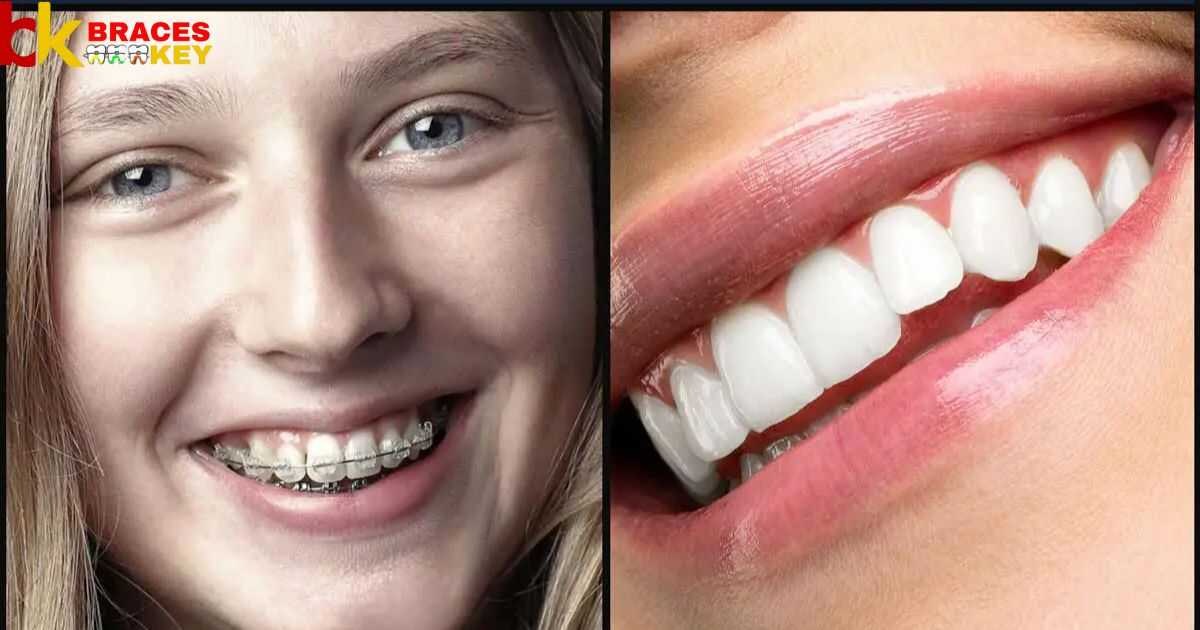While braces are used to align teeth, they have the potential to subtly alter facial structure over time as well. As teeth move into their proper positions, the jawbone underneath is reshaped through Orthodontic forces. This progressive remodeling can give the chin and cheeks a slightly slimmed appearance.
For individuals with severe overbites or underbites, the change in profile can be more dramatic as jaws shift forward or backward to a more balanced alignment. Crooked teeth placed undue pressure on facial tissues and muscles, so straightening creates space. Some patients notice slimmer jaws and hollows after braces come off.
Not everyone experiences noteworthy facial changes from orthodontic treatment. Factors like a person’s age, bone structure, and extent of initial teeth misalignment play a role. Young patients often see more pronounced effects on jawline and chin definition as bones have more capacity for reforming under dental forces. Subtle shifts are common though.
Key Takeaways
- Straightening severely misaligned teeth allows the jaw bones to remodel into a more harmonious position over time under the pressure of orthodontic forces.
- People with overbites or underbites often experience the most obvious change as their jaws shift forward or backward into balanced alignment.
- The younger a patient is when treated, the more dramatic the potential effects on facial structure since bones at that age have maximum ability to remodel shapes. Don’t miss to read out this topic Remove Teeth For Braces.
- While not everyone sees large transformations, slimmer jaws, defined chin lines, and reduced puffiness in the cheeks area are common subtle effects reported after braces.
- The degree of change varies per individual depending on their initial alignment issues, bone structure, and age when treated. Moderate shifts are likely, but drastic alterations are atypical without accompanying jaw surgery procedures.
Overview Of Braces Change Face Shape

While focused on teeth alignment, orthodontic treatment also subtly repositions jaw bones over time. For some patients seeking to correct severe misalignments like under or overbites, the transformations can be more dramatic – shifting facial profiles by guiding recessed or protruding features into better proportion.
Younger people see greater remodeling results from braces as well. Though changes vary, many notice benefits like reduced puffiness or a newly defined chin and cheekbones after teeth straightening is complete.
Step By Step Guide To Braces Change Face Shape
- An initial assessment finds severe crowding or spacing of teeth. Brackets and wires are bonded to teeth to gradually shift them into place. As teeth move, light pressure on jawbones stimulates remodeling of the underlying structure.
- An overbite/underbite causes the upper and lower jaws to be misaligned. Orthodontic appliances apply steady force to guide the jaws into a balanced position. This realignment changes facial contours, particularly shaping the chin and jawline area.
- Braces are applied to a teenager whose facial development is still ongoing. Tooth movement alters muscle function and redirects growth patterns. The result is change not just to the smile but sometimes a slimmer, more proportionate face.
Do Braces Change Your Face Shape
Many patients wonder if straightening crooked teeth with braces may alter facial aesthetics over the course. Orthodontic treatment delivers subtle enhancements by carefully shifting teeth into correct occlusion without inducing undue skeletal modifications.
Only in rare cases of severe malocclusion requiring jawbone surgery might there be noticeable changes to facial contours. Otherwise, most individuals see improved grins without unwanted transformations to defining facial features.
Braces & Facial Structure
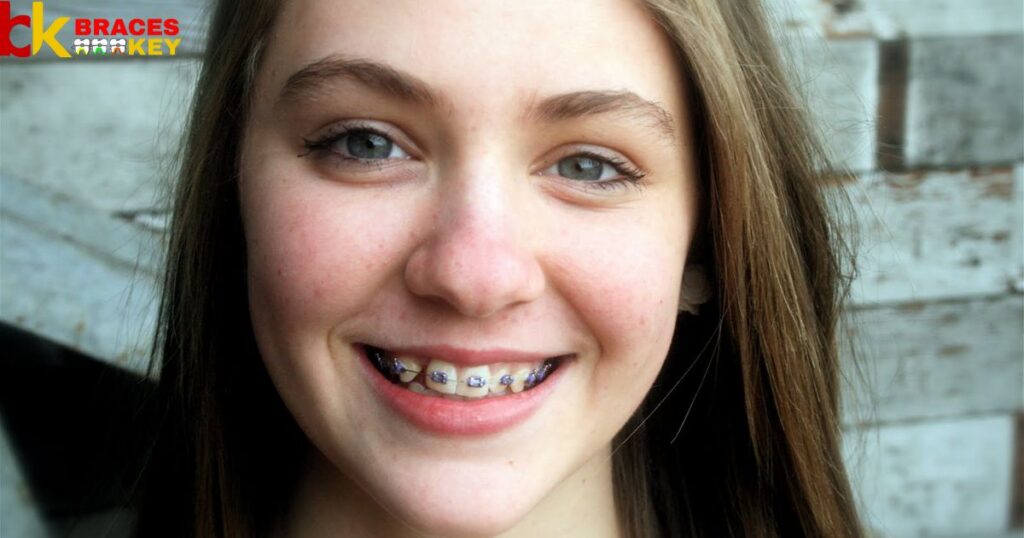
While braces chiefly focus on tooth alignment, they can marginally impact facial structure in some patients. Correcting severe overbites or underbites may gently encourage the lower third of the face to develop slightly fuller.
Largely though, orthodontic treatment leaves bone structure untouched. At most, braces help refine the lines of the smile to bring facial harmony. One need not expect braces alone to dramatically change inherent facial traits or proportions established in youth.
Periodontal Ligament
Wrapping around the root of each tooth is a specialized tissue called the periodontal ligament. Composed of collagen fibers anchored between cementum and alveolar bone, this resilient network helps support teeth and enables movement within their bony sockets.
The periodontal ligament enhances proprioception to distribute functional forces during chewing. It also helps teeth maintain responsiveness to orthodontic aligning pressures applied by braces.
Age Braces & Changing Face Shape
While youth provides optimal plasticity for braces treatment, adults can straighten teeth too with few shape-changing consequences. Mature bone is less malleable to orthodontic forces redistributing teeth positions alone.
Unless resolving a major skeletal discrepancy, braces at older ages typically refine an established facial form by enhancing smiles, not features. Careful orthodontists take bone set nationwide during later life tooth aligning, ensuring appearance remains natural yet healthier.
How Can Braces Change Your Face Shape?
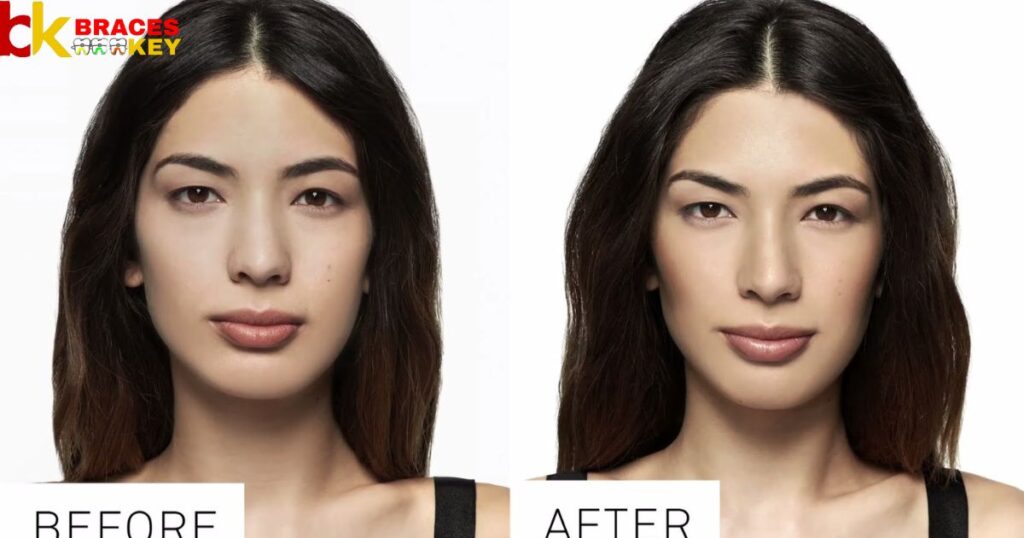
For some severe malocclusions where teeth are very crowded or misaligned, braces may help induce minimal facial structure changes aimed at creating balanced facial symmetry. Correcting an excessive overbite could allow the mandible to descend slightly for a fuller chin appearance.
Likewise, expanding a narrow maxilla through palatal expanders before braces may broaden the smile width over time. However, for most cases braces only enhance the lines of the dental arch without altering other set facial traits.
Underbite
An underbite occurs when the lower teeth overlap or fall short of the upper teeth creating a protruding jawline. Braces may be used to correct an underbite by guiding the lower teeth backwards and opening up the bite with elastics or jaw surgery in severe cases. Effectively treated underbites result in improved functionality and facial aesthetics.
Overbite
An overbite is characterized by the upper teeth falling outside and overlapping the lower teeth when the jaw is closed. Orthodontic braces can remedy overbites by pushing back upper teeth and bringing forward lowers through light, controlled force. This delivers both proper chewing alignment and a more attractive smile.
Open Bite
An open bite occurs when some portion of the tooth sequence in either the upper or lower dental arch fails to make contact with its counterpart upon closing. Braces may help close small open bites by gently squeezing front teeth together using elastic thread on an archwire. However, more severe open bites may require other orthodontic techniques with braces.
The Ways Braces Can Change Your Appearance
Though braces chiefly aim to straighten crooked teeth, they can occasionally induce minor appearance-altering effects depending on an individual’s initial orthodontic needs and structural makeup. Correcting severe crowding may let a narrow palate expand some to broaden the smile.
Resolving tooth impactions might also subtly reshape facial contours for the better over the course. For most people braces only impart refined grains without affecting defining facial traits developed since childhood.
How Does Orthodontic Treatment Change Your Facial Shape?
While braces primarily align teeth, changing facial structure is not their goal. Subtle modifications may rarely occur from addressing severe asymmetries – such as an expanded upper jaw from palatal expanders distributing forces more evenly. But facial shape depends more on genetics and maturation than orthodontics alone.
Experienced professionals aim to guide teeth into occlusion diplomatically to enhance smiles naturally without compromising one’s inherent characteristics. Overall changes from orthodontics tend to be unnoticeable to others while boosting patients’ confidence.
Can An Overbite Or Buck Teeth Be Corrected With Braces?
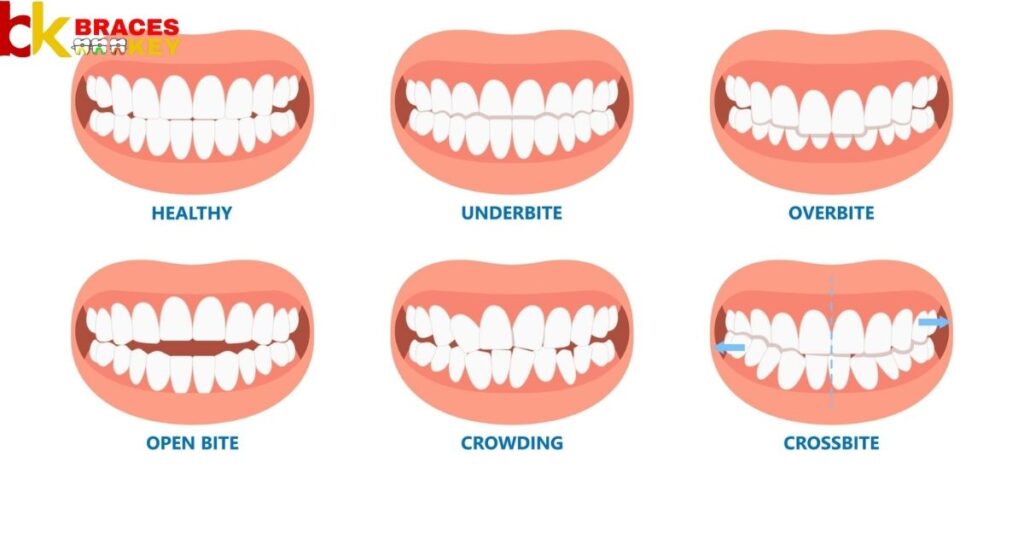
Both overbites and protruding front teeth regarded as buck teeth can be effectively addressed through orthodontic treatment. Braces are commonly used to correct overbites, typically by applying light pressure to position the upper teeth behind the lower ones.
For buck teeth, braces slowly shift them inward over months to achieve a more balanced smile. While some minor irregularities may warrant refinement, braces have proven highly successful at resolving many bite issues and creating pleasing smiles.
Do Braces Improve Your Jawline?
While braces primarily focus on straightening teeth, they can sometimes produce subtle secondary effects on jaw development. Correcting a severe overbite or underbite with orthodontics may allow the jawline contours to harmonize more naturally over the treatment period.
For milder irregularities or adult patients, facial structure has usually settled so braces mainly refine the teeth alignment without major jaw adjustments. Overall facial structure and bone density rely more on heredity than the orthodontic process alone.
Can Your Smile Change After Braces?
Wearing braces usually results in noticeable improvements to one’s smile. By properly aligning crooked or irregularly spaced teeth into a uniform dental arch, braces help create a more balanced and aesthetically pleasing grin. Subtle enhancements may also occur as disproportionate tooth sizes are adjusted.
Once the braces are removed, teeth that formerly appeared bulky or uneven will support long-lasting smiles of natural attractiveness and poise. Though minor imperfections could persist, braces can significantly change smiles for the better.
Will Orthodontic Treatment Change The Shape Of Your Mouth?
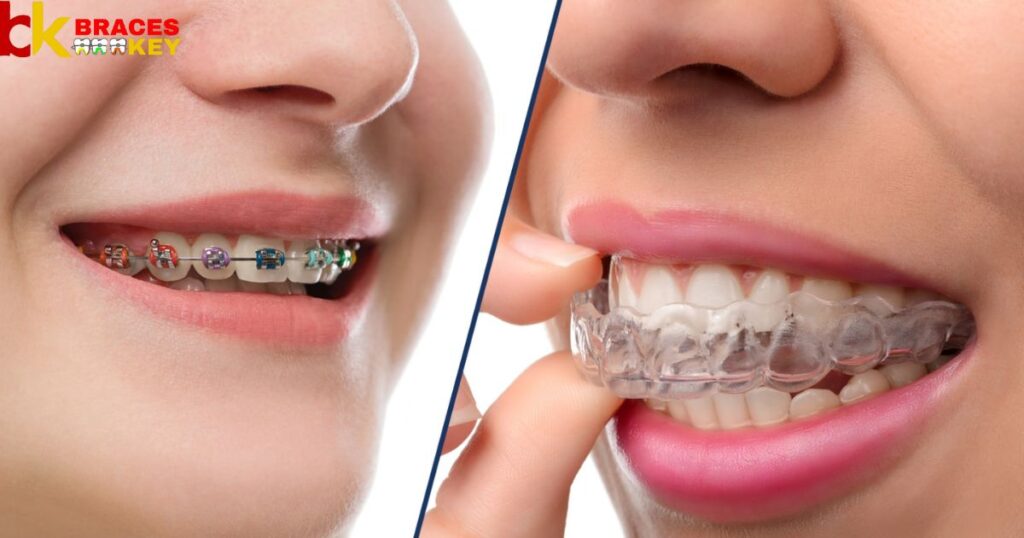
While orthodontics primarily focuses on functional tooth alignment through braces and other appliances, very occasionally it may lead to subtle shaping changes inside the mouth. Correcting severe dento-skeletal disharmonies over the course of treatment sometimes allows the hard palate and jawbones to correctly develop.
For most individuals the dental work produces cosmetic improvements without altering establishment facial features or mouth size. Experienced orthodontists aim only to enhance smiles through finely-tuned realignments.
Does Orthodontic Treatment Change Your Lips?
Though orthodontia addresses the positioning of teeth, it does not impact facial structures like lips. Correcting extremely protruding front teeth may allow for slightly improved lip seal and function over time.
More often, braces serve to subtly enhance smiles by creating uniform teeth placement and size ratios for balanced facial harmony rather than intrinsic lip changes. Most patients experience relaxed, natural lip biomechanics after straightening without drastic visually altering effects. Overall facial features are more dependent on genetics and bone maturity than orthodontic work alone.
How Will Orthodontic Treatment Affect Your Gums?
While braces focus on moving teeth, they can slightly influence gum health during treatment. Early on, aligners may increase plaque retention near brackets requiring diligent cleaning.
Achieving ideal teeth positioning through orthodontics ultimately aids oral hygiene, leading to improved gum attachment strength over years. Any initial minor irritation tends to subside quickly with care. Most importantly, a harmonized smile from orthodontics fosters confidence to maintain lifelong healthy habits that preserve natural gum contours long-term.
Will Braces Make You Look Younger?
Having braces as an adult may seem unusual to some but straight teeth and a confident grin can indeed make a positive difference in one’s appearance at any age. While orthodontics do not literally turn back time, they refine the mouth in a rejuvenating way for many patients.
Straightening crooked or gapped teeth gives the whole face a lifted, refreshed look. And feeling good about one’s smile lessens the effects of aging stress and concerns. Properly aligned teeth courtesy of braces may help one embrace their natural beauty fully at any life stage.
Do Braces Give You A Perfect Smile?

While braces deliver noticeable smile enhancements in most cases, achieving absolute dental perfection depends on numerous factors. Individual tooth size, biting mechanics and jaw bone structure naturally limit how closely alignment matches up with cultural smile ideals promoted.
Still, orthodontic treatments succeed astoundingly well at mechanically maneuvering teeth into balanced, healthy positions that appear straight and even to observers. Though minor quirks may persist, braces give patients with radiant smiles that feel perfect for confident self-expression.
Can Braces Change Your Appearance Through Confidence Too?
Braces offer benefits beyond visible teeth straightening, they can boost confidence in a way that positively influences overall appearance. With crooked teeth corrected, smiles become surer and more dynamic, subtly enhancing facial expressions. Feeling good about one’s grin lessens worries, allowing natural beauty to shine through more readily.
This inner glow emanating from newfound assurance with braces’ help shows on the outside, too. Besides mechanical alignment, the self-assurance lifted smiles subtly elevates general look and demeanor.
How Can I Improve My Smile After Braces?
While braces craft an attractive, straight smile, ongoing care preserves these results. Regular cleanings remove plaque and stains to maintain optimal brightness and health. Custom retainers or a nighttime bonding hold alignment when not wearing them. Limiting acidic, staining foods and drinks protects enamel’s luster as well.
Consistent flossing keeps gums firm around teeth. Given these simple habits, prior orthodontic investments continue paying beautifully dividends in smiles. Proper long-term maintenance ensures braces’ transformations stand the test of time.
Discover A Local Orthodontist Today
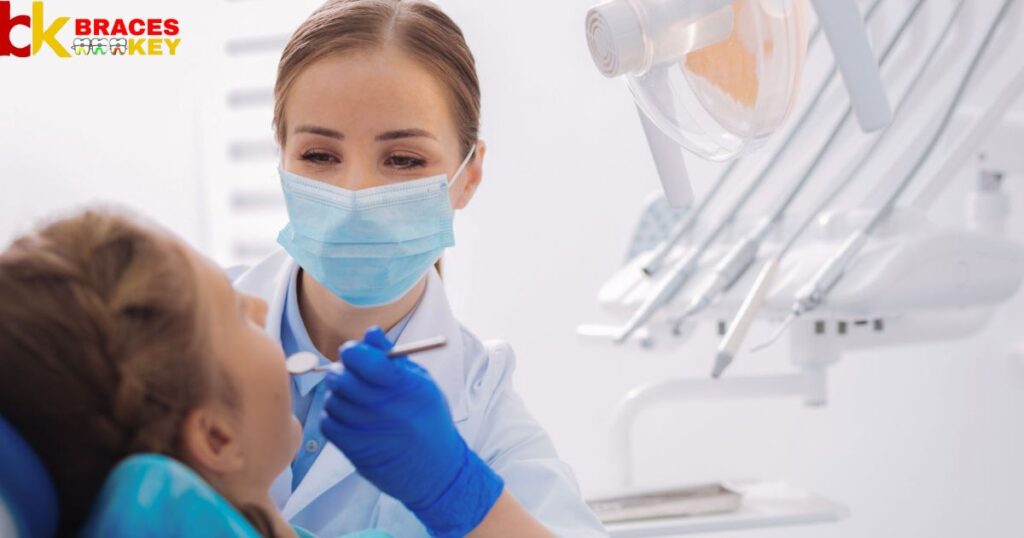
Discovering a trusted local orthodontist is an important first step towards a brighter smile. Referrals from friends who have experienced successful treatments provide ideal starting points. Research online reviews and verify credentials of specialists near you to find one with positive patient feedback and expertise in various options.
Consultations allow comparing how each professional approaches diagnosis and any concerns. Feel comfortable discussing costs and creating an affordable plan. Making an appointment soon kicks off the journey to ideal teeth alignment and increased confidence.
Potential Causes & Dental Health Risks
Oral health relies on a delicate dental equilibrium. Potential disruptors involve lifestyle, genetic predispositions and disorders. Risk factors include poor hygiene allowing plaque to mediate decay and infection. Diet plays a role as sugary intake promotes acid attacks on enamel.
Chronic anxiety may heighten bruxism grinding down teeth. Rare conditions like amelogenesis imperfecta weaken enamel structure through hereditary disorders. Maintaining routine cleanings and fluoride supports dental robustness against disease risks.
Possible Changes To The Facial Structure
While orthodontic treatment primarily focuses on aligning the teeth, in some cases it may result in minimal changes to facial structure. Correcting severely misaligned jaws or an overbite can allow the maxilla and mandible to develop more optimally over time.
For most patients the main goals are improving smiles and function without significantly altering established facial features. Experienced orthodontists aim to work harmoniously with patients’ natural growth patterns and bone structure for balanced overall results.
FAQ’s
Do Braces Make Face Slimmer?
Braces alone minimally alter facial features. Improved smiles from orthodontia can boost confidence, promoting a more relaxed countenance.
Can Braces Change Your Lips?
While braces move teeth, lips are primarily unchanged. Yet correcting a severe overbite may permit marginally improved function and subtle shaping over years.
How Will My Face Look After Braces?
Braces refine smiles above all. Any facial changes will be gradual and slight, following natural growth. Most notice confidence shining through more after straight teeth
Do Braces Make Your Face More Even?
Braces rearrange teeth for better function, not facial structure. Still, tensions resolved by orthodontia allow innate harmony to radiate through with balanced self-assurance.
Conclusion
While braces primarily focus on tooth alignment, subtle related facial changes may occur over time. Correcting severe jaws or bite issues can encourage more optimal maxilla and mandible development as the face matures, Braces Change Face Shape.
For most patients braces do not dramatically reshape established features. At most, relaxed smiles and inner confidence from straight teeth may bring out a natural glow emphasizing inherent facial harmony.
